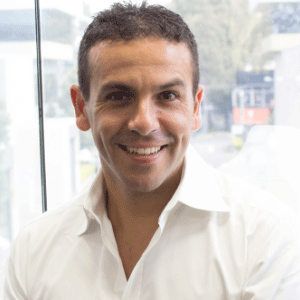THANK YOU FOR SUBSCRIBING

Balancing Risk Management with Technology in Singapore's Energy Market
Andrew Koscharsky, and General Manager, Wholesale and Trading,


Andrew Koscharsky,
Singapore’s electricity market liberalisation efforts are paying off, with contestable customers now being able to choose their power supply from twice the amount of retailers as before. This increase in competition not only translates to significant cost savings, but also promotes technological advances that empower customers to measure and manage their own consumption behaviour. Retailers are now forced to compete on a broader platform than just price. This fresh capital injection provides a wider platform, encompassing energy efficiency, real time data monitoring, carbon management and new energy products.
About 70 Percent of Singapore’s load is contestable, with the remaining 30 Percent (mainly residential) opening up to contestability sometime in 2018.
Risk Management
The obvious challenge for retailers is penetrating the Sales and Marketing battleground, but an often forgotten risk is the volatile wholesale spot market. The risk management and hedging functions associated with managing unpredictable customer consumption can be quite costly, especially when spot prices are high. The Singapore electricity wholesale market is one of the most volatile commodity markets in the world, with the spot market seeing price excursions capped at +/- SGD $4,500/MWh, settled every 30 minutes. A typical recent day would see price sit at only about SGD$65. As a result, being left long or short due to inaccurate customer forecasts can be unforgiving.
Such volatility is partly due tothe day to day fundamentals of electricity trading such as transmission, supply outages and unpredictable weather, but also due to the oil price linkage. Singapore’s electricity prices are directly linked to the volatile global oil price because Singapore imports all of its fuel from other countries, all tied to oil linked pricing. This means that retailers and generators are well advised to embrace technology to manage their wholesale market risks.
The Singapore Stock Exchange (SGX), in collaboration with the Energy Market Authority (EMA) has listed 9 tradable quarterly electricity
Singapore Loves Technology
If there is one country that embraces, develops and promotes technology, it is Singapore. As the electricity market continues to liberalise and consumers look to personally manage their own energy costs, the growing ability to do this interactively and through technological metering advances provides a real opportunity for IT service providers and developers.
Imagine being able to use an app where you can do the following:
- Buy an electricity retail product from iSwitch which is a mix of fixed price and spot market exposure. Some portion should be fixed to avoid full spot mark exposure. Spot market exposure allows you to take advantage of periods of low spot prices when they occur.
- Automatically charge your car or home battery only when wholesale spot prices are low.
- If spot prices are high then advanced software will trigger your battery to automatically discharge back into the grid, allowing an arbitrage and revenue earning opportunity.
- Turn off non-essential home appliances such as a clothes dryer, pool pump or aircon if spot prices are high with the push of a button on your phone. Alternatively, this can also be automated.
- Tell the app that you will be away for the next 5 days so there is no need to run the hot water heater or any other stand by appliances such as the TV.
The above list is only limited by imagination and Singapore can look forward to a host of new IT capital investment to help businesses and homes to save money and also reduce their carbon footprint through more efficient energy usage. While such advances are being worked on in other countries, Singapore is well placed to embrace them faster and more efficiently due to market transparency and geography.
Alex Dechnicz, Corporate Portfolio Manager at Ausgrid in Australia agrees.
“Metering technology has dramatically progressed over recent years, providing retailers, commercial customers and now, residential customers with the ability to measure monitor and manage electricity usage to suit their respective needs. Customers have been the key driver for these advancements, seeking solutions to not only obtain the data remotely in 15/30 minute intervals, but then use this data for varied decision-making. E.g. billing, environmental reporting, cost reduction analysis, bi-directional reporting, remote reconnect/disconnect, embedded networks etc. The electricity market is heavily reliant on accurate & timely data. Immediate, multifunctional access to this data empowers all users with the ability to make educated decisions and benefit accordingly.”
Advanced data technology also allows the retailer to gain real time consumption data, with better granularity. This allows iSwitch to understand customer consumption behaviour more accurately and reduce procurement costs by not over or under hedging against spot market exposure.
Who would have thought that electricity retailing could be so interesting!
Weekly Brief
I agree We use cookies on this website to enhance your user experience. By clicking any link on this page you are giving your consent for us to set cookies. More info
Read Also













